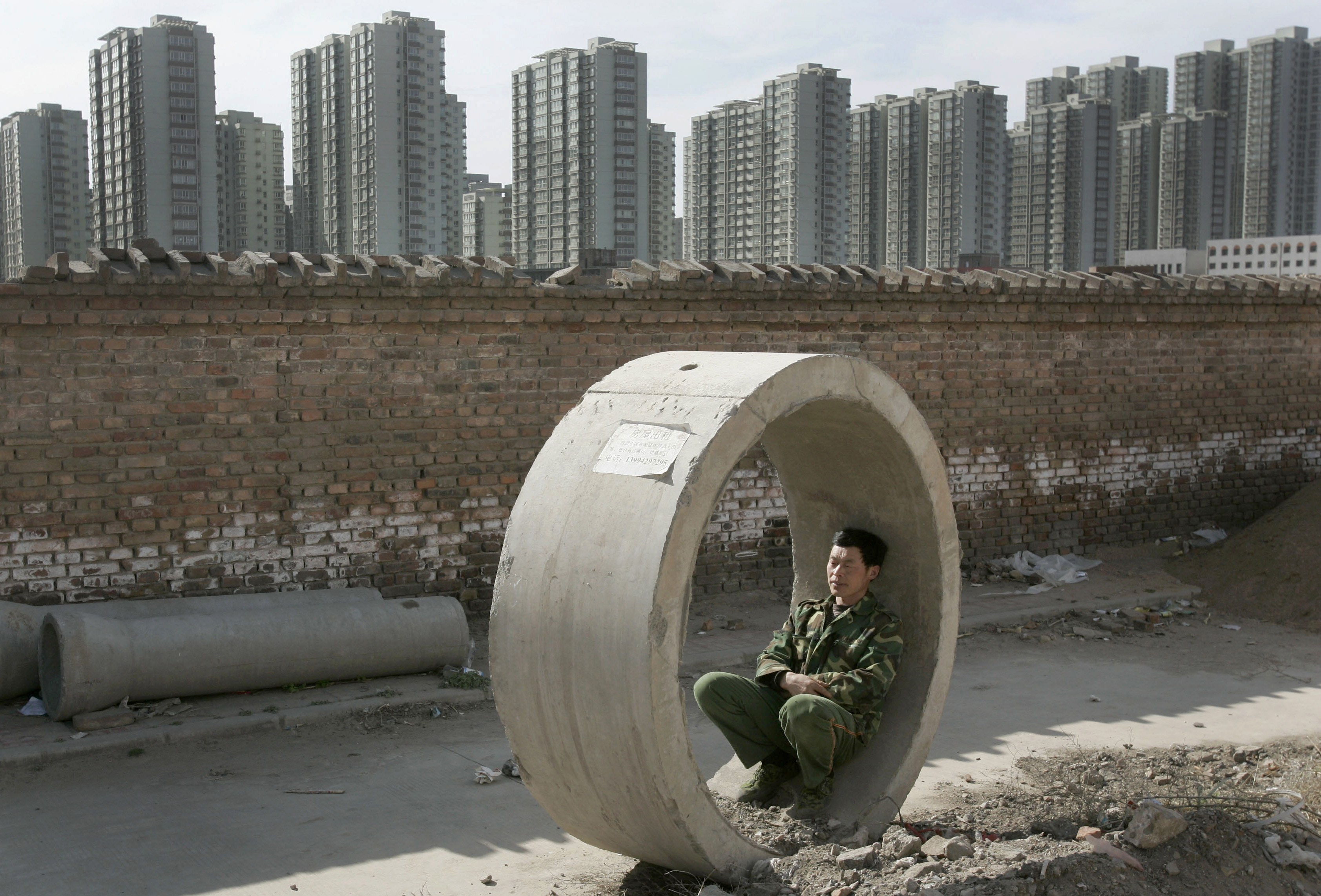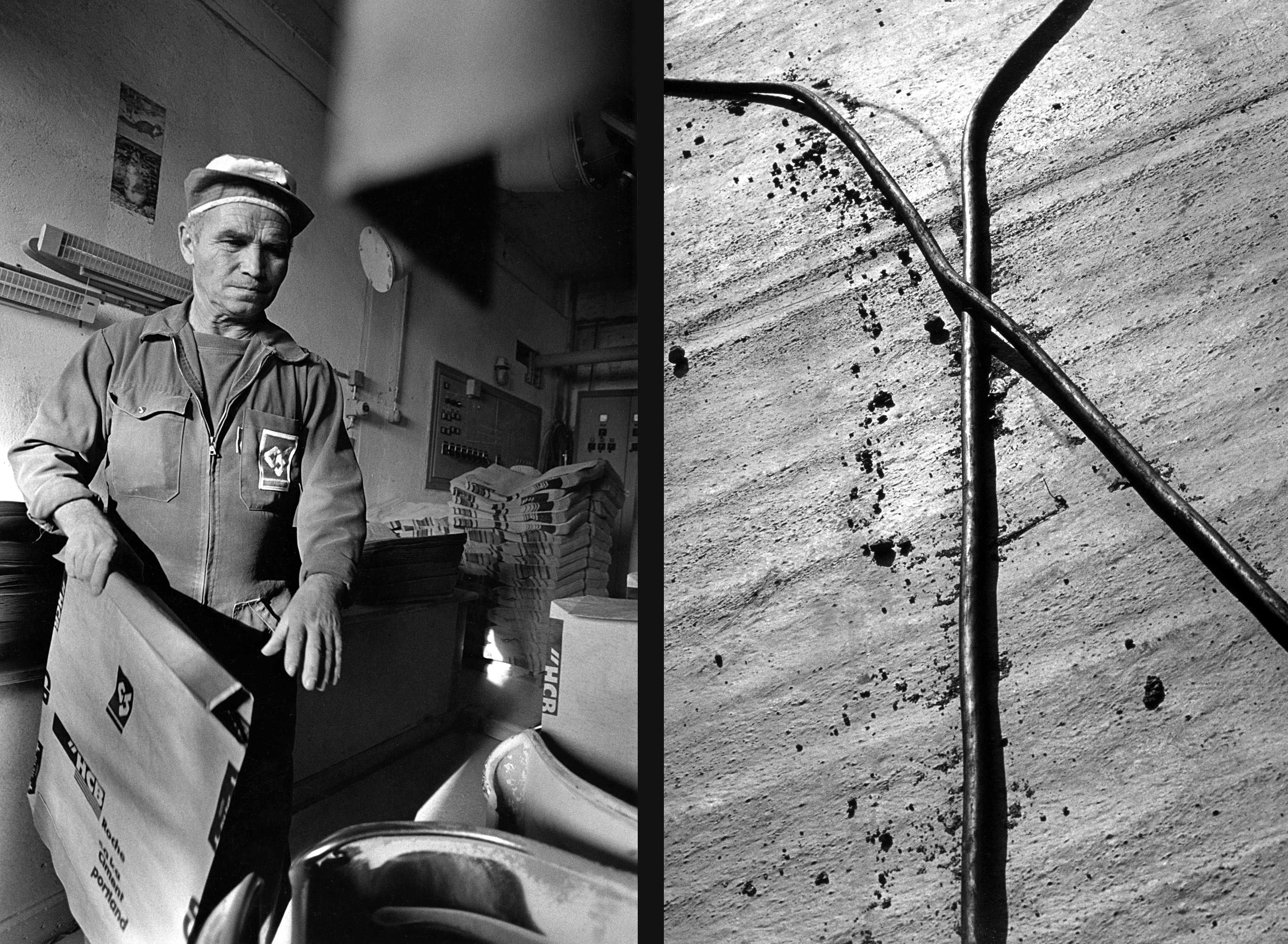Shaping cement in new, lighter ways

Far from remaining stuck in the past, cement is a building material that is constantly evolving, be it to improve energy use or simply to recycle it. Lausanne’s Federal Institute of Technology (EPFL) is at the forefront of these changes.
Cement might seem grey, boring and very common. The most widely used construction material in the world, it has a long history. But it has a huge potential for further development as well, way beyond the invention of reinforced concrete in the first half of the 20th century.
“Do you know what this is made of?” asks Eugen Brühwiler as he hands over a large lightweight bolt. “It’s just one example of what you can do with cement,” explains the head of the EPFL’s civil engineering institute.
Cement research doesn’t just benefit producers. To make it, you need ovens heated to 1,400 degrees Celsius, which in turn generate five per cent of the world’s carbon dioxide emissions.
For Switzerland, production accounts for up to nine per cent of the emissions of that specific greenhouse gas. The construction sector itself is responsible for 40 per cent, points out Brühwiler.
So developing materials with better insulation properties, such as improving concrete quality, or coming up with cement production methods that require less energy could benefit all of society.
Progress
Progress has been made over the past few years, in part due to the research carried out at the EPFL.
“In one decade, the amount of energy needed to produce a kilogram of cement has fallen by 30 per cent,” Brühwiler tells swissinfo.ch. The improvement is due partly to changes to the “ingredients” that make up cement.
The potential for improvement is still significant. Suggested changes include facilities with lower power consumption, replacing fossil fuels with other energy sources and reusing any generated during production.
Another challenge the construction sector faces is to reduce the amount of concrete it uses without weakening structures. Less weight would mean lower transports costs, and less concrete would require less gravel, reducing the negative impact its mining has on wildlife and the landscape.
“The aim of researchers is to develop concrete that has little or no gravel,” says Brühwiler as he holds up a small cube. It is made of high-performance fibre-reinforced concrete.
It is cement mixed with different types of powders, such as silica fume (see link), to which steel fibres are added. EPFL scientists have been developing this type of concrete for a number of years.
It is as strong as traditional concrete, but only a quarter as thick. “It’s a new material that opens new perspectives for the construction sector, especially for lightweight structures. It could even compete with steel structures.”
Zurich project
The first major project using this new type of concrete will be a 140-metre footbridge with a single span crossing the railway lines between the city of Zurich’s fourth and fifth districts.
Brühwiler thinks it will highlight the potential of the new material and help change negative perceptions people may have of cement.
Compared with traditional concrete, it costs about ten times as much, whereas compared with steel, it costs three times less.
Price is not the only factor that is taken into account. With less volume to be handled, it means fewer trucks to transport the concrete, fewer workers and less machinery onsite. “Work proceeds two to three times faster than with traditional concrete,” says Brühwiler.
Some of its characteristics, in particular water resistance, also make it useful for repairs. “We used this material to fix a bridge built 40 years ago in Lausanne. It was suffering from corrosion and its bearing capacity was affected.”
Recycling
“My first aim is to upgrade existing constructions. I don’t like to see structures knocked down to be replaced with others,” Brühwiler says, adding that if demolition is unavoidable, recycling should be possible for part of the rubble.
“It’s possible today to recycle a lot of construction material, to make a granulate similar to gravel that can be used in another type of concrete. You can build secondary elements requiring a certain volume such as foundation blocks.”
Such a development would be welcomed as the construction sector is also responsible for generating 40 per cent of the country’s waste. Research is also focusing on the development of concrete using insulating aggregates.
“It’s possible to imagine walls and slabs made from insulated concrete without using other materials.”
Just another example that despite a 1,000-year history, cement and concrete still have a future.
According to the National Science Foundation’s “sustainable development of the built environment”, by the end of 2011 the total value of all buildings and infrastructure in Switzerland was worth SFr2,400 billion brand new, or SFr310,000 per inhabitant.
Around SFr30 billion (SFr4,000 per person) is spent every year on the upkeep of these constructions.
Given the increasing population and growth of technical infrastructure, an estimated SFr65 billion will have to be spent annually on further development over the next two decades, or around 12 per cent of the gross domestic product.
If financing is guaranteed for the time being, additional funding will be needed in the future, competing with other sectors of the economy for spending.
According to Eugen Brühwiler, sustainable building methods must be developed to avoid the demolition of older structures.
(Translated from Italian by Terence MacNamee)

In compliance with the JTI standards
More: SWI swissinfo.ch certified by the Journalism Trust Initiative












You can find an overview of ongoing debates with our journalists here . Please join us!
If you want to start a conversation about a topic raised in this article or want to report factual errors, email us at english@swissinfo.ch.